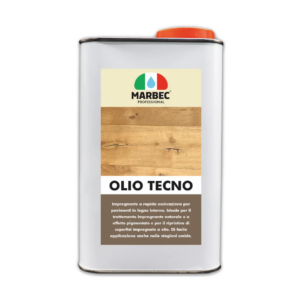Parquet maintenance is an important aspect to ensure its beauty and durability. For this reason, regular and gentle cleaning of this surface is necessary, avoiding the use of aggressive products and prolonged exposure to moisture.
Flatting, or opacity, can be caused by a variety of factors, such as wear, dust accumulation, or the presence of oily substances. Sanding, applying a new protective layer and polishing are the main steps to eliminate flatting.
If it persists, however, despite attempts to remove it, you may need to seek professional help with wood restoration.



How to clean a natural wood floor
This month the craftsman protagonist of our column on the most beautiful work of the month found himself in front of a prefinished walnut wood floor that was presented with a bad paint now degraded and scratched.
The intervention was therefore to remove the old paint, carrying out an oily impregnation treatment to give a new life to the floor.
First of all, the craftsman, in order not to change the aesthetic appearance of the parquet planing, has discarded the wood with a single brush equipped with MARBEC TYNEX DISC.
Once the craftsman removed the old paint he then applied the product OLIO TECNO with a spreading fleece and, once the product dried, removed any excess with a single brush in red disc.
Finally, after removing the excesses, he passed the BIOTOP wear and tear-resistant finish with spreading fleece, for a final result that speaks for itself.
The main difference between the old paint treatment and the oil impregnation treatment made by the craftsman is that the latter does not create films and leaves a more resistant wood with a more natural effect. This type of treatment, moreover, carried out on this floor that has the characteristic of being planned, does not require to rewrite the wood in future years.
That’s all for this month too, but if you want advice on the proper maintenance of an oiled wood, please visit this link to know how to do it and what are the right products to use!
Greetings and appointment next month.

A glossy varnished teak parquet, heavily worn and scratched, was completely restored thanks to a meticulous refurbishment process. The final result is a floor that is once again bright, uniform, and protected, with a glossy finish that enhances the natural elegance of the wood and makes ongoing maintenance easier over time.

The artisan company PIPPOLO, specialized since 1991 in the treatment of stone materials in the Tuscany–Emilia region, carried out a restoration and enhancement of a terrazzo floor. The work included three main phases: a deep cleaning with SGRISER and a red pad to remove old treatments and incrustations; the hydrophobic protection with TON PLUS to prevent the absorption of liquids and revive the colors; and finally, the finishing with POLIFIN, a self-polishing metallized wax that provides brilliance and resistance to foot traffic. The result is a terrazzo floor that is renewed, luminous, and perfectly protected.

















